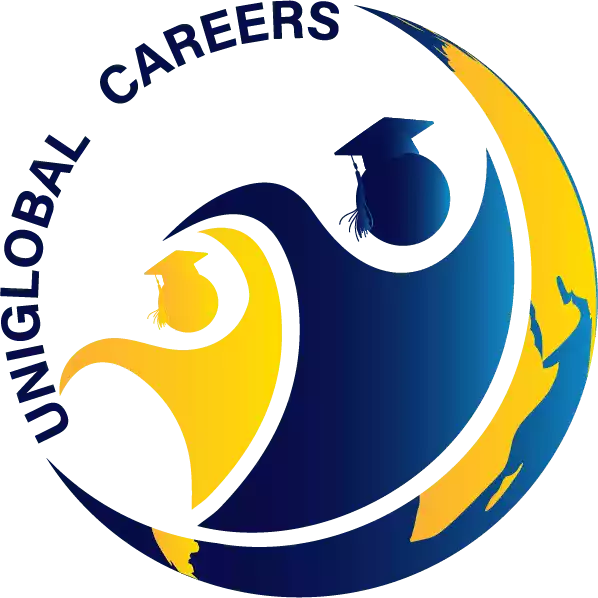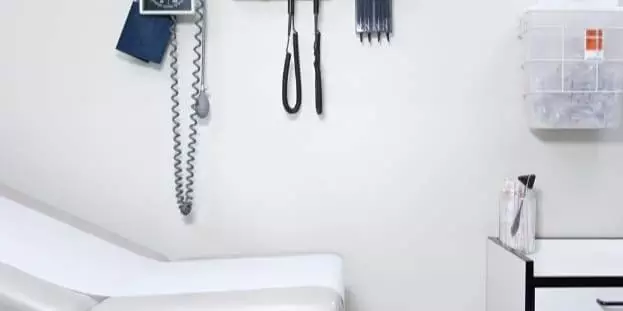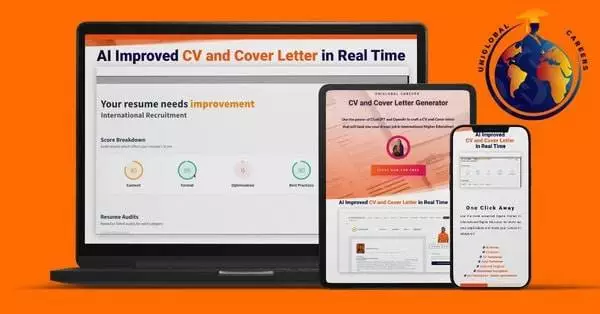[ad_1]

XiXinXing/ Shutterstock
In this Higher Ed Careers interview, Andrew Hibel speaks with a bunch of neuro-ophthalmologists about overcome the problem of filling fellowships, and finally full-time positions, in their area and different medical subspecialties. Provider shortages, it doesn’t matter what area, put future affected person care and properly-being in danger.
Andrew Hibel, HigherEdJobs: Please share an introduction to the neuro-ophthalmology area.
Committee: Neuro-ophthalmology is a subspecialty that mixes ophthalmology and neurology and requires one 12 months of fellowship after both an ophthalmology or neurology residency. Neuro-ophthalmologists see sufferers with imaginative and prescient loss, double imaginative and prescient, pupillary or lid abnormalities, and irregular involuntary eye actions (e.g., nystagmus) related to issues of the mind, thus taking part in a significant position in the prognosis and administration of imaginative and prescient-threatening and life-threatening illness. Neuro-ophthalmologists not sometimes diagnose illness that presents with visible points but have the potential to trigger extra widespread signs equivalent to a number of sclerosis, stroke, mind tumors, and myasthenia.
Hibel: In a current dialog with a neuro-ophthalmologist, we realized that many fellowships in this subspecialty go unfilled. Can you verify or deny this? If it is true, what are among the challenges to filling them?
Committee: It has been estimated that one full-time scientific neuro-ophthalmologist can present protection for 1.2 million Americans.1 Despite this very massive ratio of sufferers to neuro-ophthalmology suppliers, in line with a current North American Neuro-Ophthalmology Society (NANOS) membership survey,2 our nation nonetheless falls far beneath this threshold with solely eight states appropriately assembly this demand, and 6 states not having a single training neuro-ophthalmologist. This may be harmful for sufferers as a result of it might delay the prognosis of great circumstances, equivalent to mind tumors, systemic inflammatory ailments, and vascular stroke, dissection, or aneurysm.
Unfortunately, about one-third of neuro-ophthalmology fellowship positions have gone unfilled in current years. In addition, many positions are crammed by worldwide graduates who is not going to stay in the United States to follow neuro-ophthalmology.
To decide why ophthalmology residents don’t extra typically pursue a profession in neuro-ophthalmology, a survey was not too long ago despatched to all graduating US PGY4 ophthalmology residents.3 Several of essentially the most generally cited causes to not pursue a profession in neuro-ophthalmology included 1) the perceived lack of surgical procedure, 2) potential job alternatives restricted to teachers, and three) low anticipated salaries. Interestingly, a few of these perceived obstacles to pursuing neuro-ophthalmology are outdated misconceptions. Although neuro-ophthalmology has historically been thought-about a medical subspecialty, in line with a current survey of neuro-ophthalmologists in the United States, over 50% of training neuro-ophthalmologists actively incorporate surgical procedure into their practices. The survey additionally discovered that one-third of lively neuro-ophthalmologists follow in a non-tutorial, personal follow setting, typically combining neuro-ophthalmology with normal ophthalmology/neurology or different subspecialties, thereby diversifying scientific pursuits. Admittedly the salaries in neuro-ophthalmology may be decrease than subspecialties which can be extra closely surgical, however there may be a variety of salaries that may be aggressive. In addition, neuro-ophthalmologists have a singular skillset that makes them helpful to a big follow or tutorial heart and might improve affected person volumes for the remainder of the follow. Once the misconceptions about neuro-ophthalmic follow have been addressed, the advantages of being a neuro-ophthalmologist may be extra absolutely appreciated.
Hibel: What can we be doing in another way in academia to assist fill these specialty fellowships and finally enhance numbers in fields which can be historically understaffed?
Committee: In addition to serving to take away the misconceptions which can be obstacles to residents selecting neuro-ophthalmology as a area, medical faculties can turn into extra proactive at assessing present and future demand for doctor providers subspecialty by subspecialty.4 As they establish specialties/subspecialties in which a doctor scarcity is current or anticipated, the next actions might be carried out:
- All medical college students might obtain an annual checklist of specialties which can be in brief provide. Medical college students must be urged to take a look at the disciplines with manpower shortfalls as potential careers as a result of this can assist offset the scarcity, and the graduating medical pupil could be assured extra job safety in coming into a area that has excessive demand. Medical faculty dean’s places of work ought to work with specialty/subspecialty societies to have a present checklist of administrative and doctor management contacts in order that medical college students might have a simple avenue for studying extra about these brief-provide specialties.
- All medical faculties might commit a day in the second semester of 12 months one or the primary semester of 12 months two because the “Meet the specialties that are seriously needed” day. The AAMC can work with the related specialty societies to develop small speaker bureaus that may ship audio system to satisfy with medical college students on this present day. The specialty societies might work with the AAMC to develop an internet site of present supplies that would function reference supplies for the scholars to be taught extra about these specialties.
- Just as monetary incentives had been developed by CMS and others to encourage physicians to coach in major care; such incentives might be thought-about for specialties the place there’s a extreme scarcity of suppliers.
Hibel: What particular specialties/subspecialties (apart from neuro-ophthalmology) are going through this problem of recruiting docs?
Committee: Several specialties, apart from neuro-ophthalmology, are additionally affected by present and projected doctor shortages, together with pediatric ophthalmology, uveitis and inflammatory ocular illness, and normal neurology. These fields share comparable obstacles with neuro-ophthalmology in recruiting trainees into their specialty, whereas additionally having a few of their very own distinctive obstacles.
According to Lee et al, a big purpose for the scarcity in pediatric ophthalmology is the downtrending financial reimbursement in pediatric ophthalmology in comparison with different subspecialties.5 Pediatric sufferers require extra prolonged examinations, and there could also be alternative prices associated to the extra time essential to completely look at sufferers, notably these with particular wants. Additionally, the 2022 CMS charge schedule proposed sharp reductions for plenty of the strabismus surgical procedure codes, that are the principle surgical procedures carried out by the subspecialty. These financial elements undoubtedly have an effect on fellowship choice, ensuing in fewer ophthalmology residents pursuing pediatric ophthalmology as a subspecialty.
Similar to some neuro-ophthalmology practices, uveitis and ocular immunology usually are not a procedural specialty and subsequently reimbursement for providers is commonly lower than the extra surgical specialties in ophthalmology. In addition, they too share the challenges of longer visits on account of extremely advanced sufferers with vision- and even life-threatening illness. General neurology suffers from comparable challenges, caring for advanced sufferers and having fewer choices for procedural coding, aside from electromyography and electroencephalography. These financial modifications may end up in dissatisfaction amongst present practitioners, thereby ensuing in general disillusionment throughout the area which undoubtedly has an impact upon trainees. Other cognitive non-procedural medical specialties, equivalent to cognitive neurology and rheumatology, expertise comparable difficulties.
Hibel: Do Medicare reimbursements play into college students’ selections about what fields to pursue? Specifically, are decrease Medicare reimbursements for prognosis vs. therapy conserving individuals from going into diagnostic fields? And in that case, what affect does which have lengthy-time period for sufferers and healthcare in the U.S.?
Committee: While information don’t assist a direct reply, we do have pupil opinion about specialty alternative from the Graduation Questionnaire (GQ) printed yearly by the AAMC. The GQ is distributed to all graduating medical faculty seniors and consists of a number of questions on influences on specialty alternative. Over the final 5 years, college students’ specialty selections are most affected by content material of specialty and match with persona, pursuits and abilities, with position mannequin affect and fellowship choices additionally being excessive on the checklist. Income expectations are predominantly a minimal to reasonable affect, however there was a gradual rise in it as a serious affect over the past 5 years (AAMC GQ report, 2022). Overall, this means that medical college students are nonetheless selecting specialties based mostly on their passions versus their future compensation, though this can be a altering development that bears watching.
Perhaps the extra necessary query is what the elements are that affect ophthalmology or neurology residents-in-training subspecialty alternative. As mentioned above, in line with a current survey of not too long ago graduated ophthalmology trainees,3 40% of ophthalmology trainees surveyed cited wage as a purpose to not pursue neuro-ophthalmology fellowship, which was the third mostly cited purpose. A neurology survey is in improvement and can assist perceive the various factors affecting neurology resident subspecialty selections.
Further delineation of the reimbursement points that have an effect on neuro-ophthalmology suppliers has been explored by Dr. Frohman in his current Hoyt Lecture.4 This highlights the numerous limitations for the “cognitive specialties” reimbursements from CMS and the workarounds that particular person suppliers resort to in order to assist their neuro-ophthalmology practices in the educational and personal sectors, which embody secondary fellowships (often surgical or containing some interventional part) and/or retaining normal ophthalmology/neurology practices. There is little doubt that these various factors play a big position in the issue recruiting after which retaining full-time neuro-ophthalmologists. This problem in recruiting and retaining full-time neuro-ophthalmologists has led to and can proceed to trigger mismatch of provide to demand, with the common wait time for a brand new affected person appointment most not too long ago calculated at seven weeks.2 Without important modifications, the affect will likely be more and more insufficient entry to neuro-ophthalmologic care. And if individuals educated in neuro-ophthalmology commit solely a fraction of their time to this self-discipline, the query of who could have satisfactory neuro-ophthalmic experience to correctly prepare the following era of neuro-ophthalmologists is a priority.
[ad_2]


